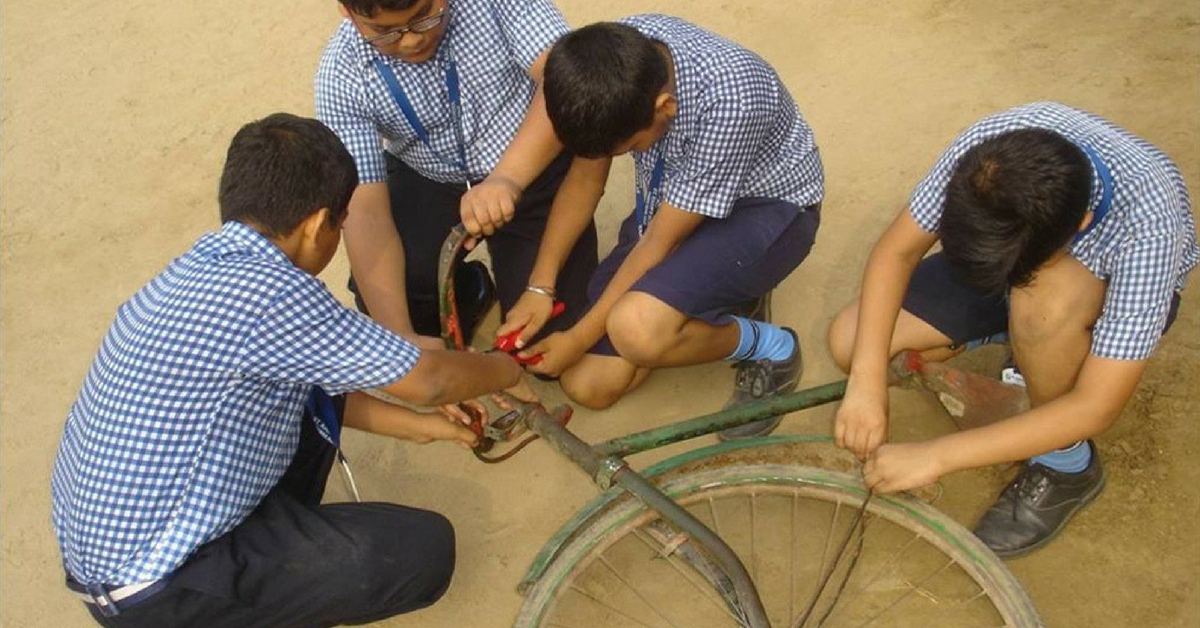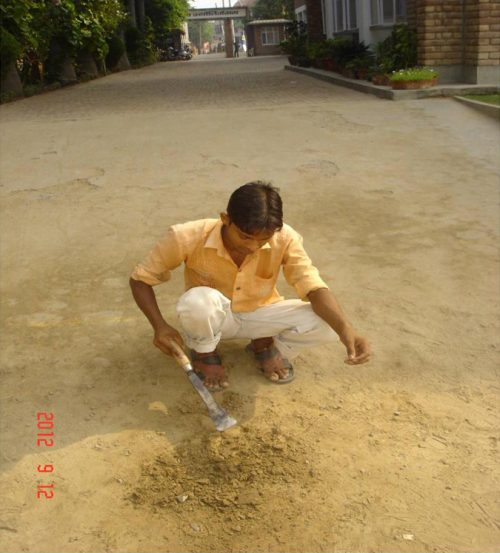TBI Blogs: These Schoolkids Designed a Bicycle Plough to Make Their School Gardener’s Work Easier
Students at St. Kabir’s Residential and Day School, Haryana, designed a plough to ease the burden of the school gardener, who took a lot of time to plough the garden, time that he could otherwise spend in studying or pursuing other jobs. The project was selected amongst the Top 20 stories at the ‘I CAN Awards 2012’ organised by Design for Change.

During an engaging discussion on agriculture with teacher Smita Agrawal, in a Class VIII class, students at St. Kabir’s Residential and Day School looked out at their immediate surroundings and at their own school garden. They observed out loud that they wanted to unburden the school gardener, whose job required him to spend up to four to five days laboriously digging the garden soil, but felt helpless. The gardener’s time would be much better utilised in pursuing part-time jobs or in studying, or even in taking better care of the plants.

Imagining various solutions, the students – Shriyansh Agrawal, Doshagya, Anirudh Gupta, Mohit Juneja, and Saransh – wondered if they could hire more gardeners, or buy a mini-tractor. As these options would be too costly, and they did not want to burden animals like bullocks or camels, one of the children chimed in that they could procure an old auto-rickshaw and attach a plough to it.
In response, another student added that they could have a younger student make rounds in the garden on his tricycle, and simply connect a plough behind his vehicle.
From this emerged the idea to create a bicycle plough.

Collecting a fund of ₹600, they procured recyclable materials from a kabadiwalla. The device was a combination of a plough with the front axle, wheel, and handle bar of a bicycle. The solution would save both money and time, as well as be eco-friendly and portable. One could weed 800 sq. m. in an hour using this bicycle plough.
Though initially people laughed at how this could possibly work, the students used simple mathematics to calculate the costs that a gardener would otherwise have to spend in paying rent for a small tractor, an option that many farmers subscribe to. In terms of money, manpower, and fuel requirement, the solution fit. It can be used in small farms, parks and kitchen gardens.

See how the plough works, here:
Through street plays, the students popularised the idea in their community and exhibited it in various places. The project was one of the Top 20 stories selected from amongst 728 stories submitted for the ‘I CAN Awards 2012’ organised by Design for Change, a not-for-profit organisation that challenges children to solve problems in their community by following the simple 4-step formula of Feel-Imagine-Do-Share.
At the ‘I CAN Awards’, Disney – one of the award partners – noticed the students’ innovation, and offered to set up an activity centre at St Kabir’s school later.
Although in 2010, a farmer called Gopal Malhari Bhise from Jalgaon district in Maharasthra, had devised a cycle weeder with a similar concept, the students at St Kabir’s serendipitously came up with such a similar idea organically, over their discussions, without having referred to this.
As an interpretation of a concept that has been cropping up in villages scattered across the globe of late, it holds great value in terms of the factors that drove the children to take on this project in the first place—empathy towards the school gardener, a refusal to feel helpless, and a willingness to create a solution that would ease the gardener’s burden.
Initially, the students welded the plough to the bicycle, but later devised an improvement. It uses simple bolt-and-nut arrangements to connect other attachments – such as tools for weeding and tilling – as required. This takes some cues from Gopal’s innovation. Mentor Smita Agrawal says that this was an exercise in active learning. She adds, “Learning by doing helps a child retain up to 45 times more.”
Be a part of one of the largest global movements of children driving change in their communities. Take up the ‘I CAN School Challenge’ in your classroom. Find out more online.
Like this story? Or have something to share? Write to us: [email protected], or connect with us on Facebook and Twitter.
NEW: Click here to get positive news on WhatsApp!
This story made me
- 97
- 121
- 89
- 167
Tell Us More
We bring stories straight from the heart of India, to inspire millions and create a wave of impact. Our positive movement is growing bigger everyday, and we would love for you to join it.
Please contribute whatever you can, every little penny helps our team in bringing you more stories that support dreams and spread hope.



















